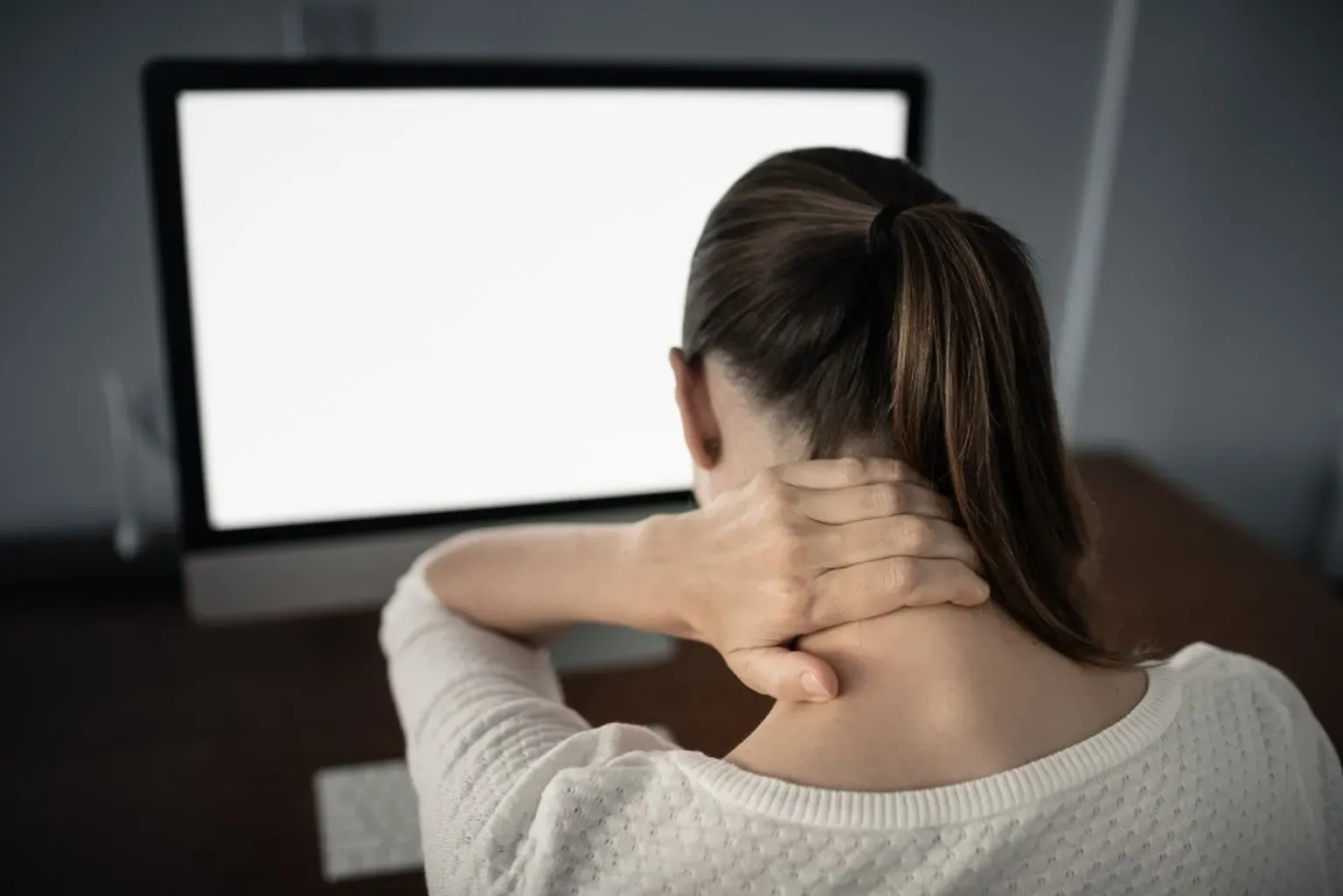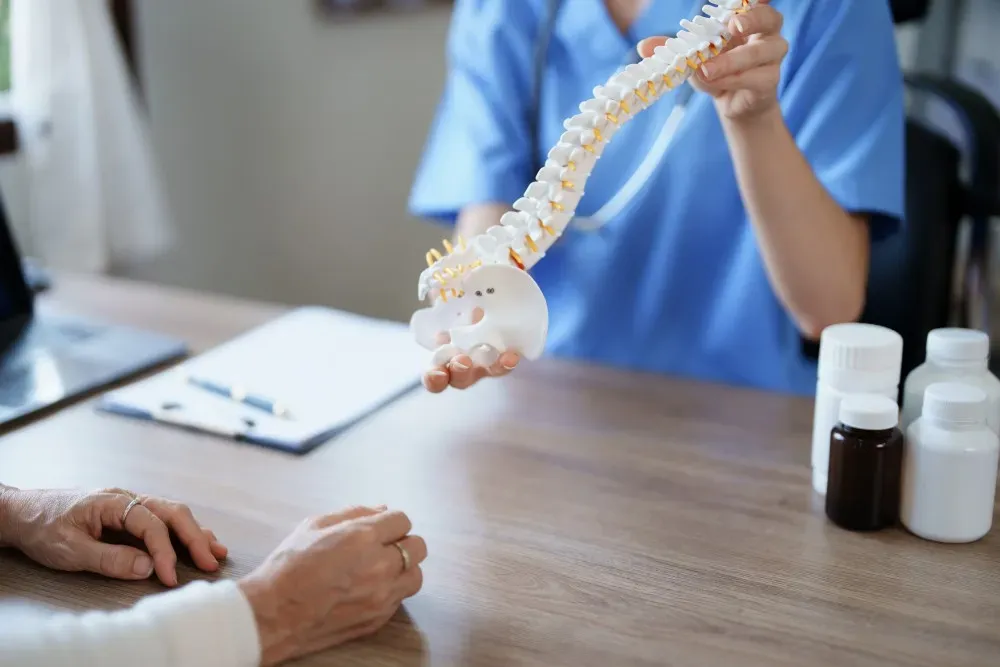Neurosurgery & Orthopedic Surgeons in Jacksonville

What is Degenerative Disc Disease?
,h2>Degenerative disc “disease” (DDD) is not truly a disease. It’s a condition that develops when normal wear and tear on the spinal discs cause pain, instability and other symptoms.
Degenerative disc “disease” (DDD) is not truly a disease. It’s a condition that develops when normal wear and tear on the spinal discs cause pain, instability and other symptoms. By itself, disc degeneration is a natural and normal part of aging. 30% of people show evidence of disc degeneration by the age of 35 and 90% of people show evidence by the age of 60.
Unfortunately, degeneration can also cause significant pain and symptoms, and DDD is one of the most common causes of low back and neck pain. The lumbar and cervical regions of the spine are mobile and bear a lot of weight, which makes them more susceptible to injury and degeneration.
Keep reading to learn more about DDD and the treatment options available to you if you’re experiencing pain and disability.
HOW DOES DDD DEVELOP?
Spinal discs sit between vertebrae in the spine. They’re responsible for providing structural support, cushioning and shock absorption. They aid flexibility and movement in the spine. With age, wear and tear, spinal discs become drier, less flexible and more vulnerable to cracks, tears and injuries over time. When this natural process of degeneration causes pain, spinal instability and other symptoms, it’s classified as degenerative disc disease.
DDD can be difficult to diagnose because the presentation of symptoms differs from person to person. Some people experience no symptoms, while some people have symptoms that come and go in episodic flare-ups. Some people experience debilitating pain from DDD. Pain usually doesn’t stem from the breakdown of the discs themselves — it develops when disc degeneration affects the surrounding nerves, tendons, ligaments and facet joints that support the spine.
Pain from DDD doesn’t necessarily worsen over time. Everyone experiences age-related spinal changes and many people live active, pain-free lifestyles with disc degeneration.
CAUSES AND COMPLICATIONS
Degenerative disc disease is caused by the natural aging process. Obesity, a history of spinal injuries, a physically demanding job and playing sports for many years are risk factors that can hasten the degenerative process.
DDD may speed up or contribute to the development of other spinal conditions, including:
- Bone spurs
- Herniated discs
- Spinal stenosis
- Osteoarthritis
- Spondylolithesis
- Scoliosis
SYMPTOMS
The primary symptom of DDD is constant, low-grade neck or back pain. If a damaged disc is compressing a nerve in the spinal cord, you may also have pain, numbness, weakness and tingling that radiates down your shoulder and arm or buttock and leg. This type of nerve pain is called radiculopathy. Spinal instability from degenerative changes may cause you to feel like your back or neck are “giving out” at times and can’t support you. Instability can also lead to muscle spasms in the neck or back.
Another primary sign that characterizes degenerative disc disease is episodic flare-ups that cause intense, sometimes debilitating, pain. Flare-ups may last for days, weeks or even months, and may come on suddenly from an unknown trigger. Some flare-ups are triggered by a recent increase in activity level or an accident or injury that places more stress on the spine.
While certain types of movement that increase pressure on the spine may worsen pain, including:
- Bending or twisting the spine
- Lifting heavy objects
- Sitting for long periods
- Standing for long periods
Walking, switching positions or lying down can help relieve pressure and pain.
DIAGNOSIS AND TREATMENT OPTIONS
To make a diagnosis, your doctor will ask you about your symptoms, medical history and history of accidents and injuries. He or she will perform a physical exam to test your mobility and muscle strength. Your doctor will order imaging tests like a CT scan or MRI to look for soft tissue damage, nerve compression or other causes of pain like bone spurs or arthritis.
Most cases of degenerative disc disease are treated conservatively. Treatment can’t reverse degenerative damage, but it can help reduce pain and lower your risk for flare-ups. Your doctor may recommend the following:
1.) MEDICATIONS. OVER-THE-COUNTER PAIN RELIEVERS LIKE ACETAMINOPHEN CAN HELP EASE MILD TO MODERATE PAIN. OVER-THE-COUNTER NSAIDS CAN HELP REDUCE BOTH PAIN AND INFLAMMATION. IF YOU ARE EXPERIENCING A FLARE-UP OR HAVING SEVERE PAIN, YOUR DOCTOR MAY PRESCRIBE A STRONGER PAINKILLER. HE OR SHE MAY ALSO PRESCRIBE MUSCLE RELAXANTS IF YOU’RE HAVING SPASMS.
2.) Cortisone injections. Cortisone injections directly into the facet joints next to the damaged disc can help relieve pain, inflammation and irritation. Injections provide only temporary relief and the effects will wear off over time.
3.) Physical therapy. Physical therapy exercises can help strengthen the muscles in the back and neck to reduce pain and improve mobility and flexibility. Conditioning exercises should also focus on strengthening the core muscles, which help support and stabilize the spine and back.
4.) Stretching. Gently stretching the neck, shoulder and upper back muscles can help relieve tension and pain in the neck. Gently stretching the back, hip and hamstring muscles can help relieve pain in the low back. A physical therapist can show you several stretches you can use at home.
At home, you can make several lifestyle changes to reduce pain and keep your spine healthy, including losing excess weight, exercising and stretching regularly and supporting the spine by practicing good posture and using ergonomic furniture when sitting and standing.
SURGERY
If you have severe pain that isn’t relieved with conservative treatment, surgery may be an option. There are 2 surgical procedures your doctor may present:
- Disc replacement surgery. During the procedure, your surgeon will remove the damaged spinal disc and replace it with an artificial one. Replacement surgery can reduce or eliminate back pain.
- Spinal fusion surgery. During the procedure, your surgeon will remove the damaged disc and fuse the adjacent vertebrae. Spinal fusion can reduce pain and improve mobility.
Both replacement and fusion surgeries can be performed as minimally invasive procedures. If you’re a candidate for surgery, your doctor will walk you through which procedure is best for your condition and the risks involved.
INTEGRITY SPINE AND ORTHOPEDICS TREATS SPINE AND JOINT CONDITIONS
Integrity Spine and Orthopedics provides treatment for a wide range of acute and chronic spine, joint and musculoskeletal conditions. Our team of board-certified physicians specializes in orthopedic care, pain management and minimally invasive spinal procedures. If you’re experiencing pain, decreased mobility and a reduction in your quality of life, we may be able to help.
Call us at 904-456-0017 or send us your contact information to make an appointment. We also offer free MRI reviews — contact us for more information.




